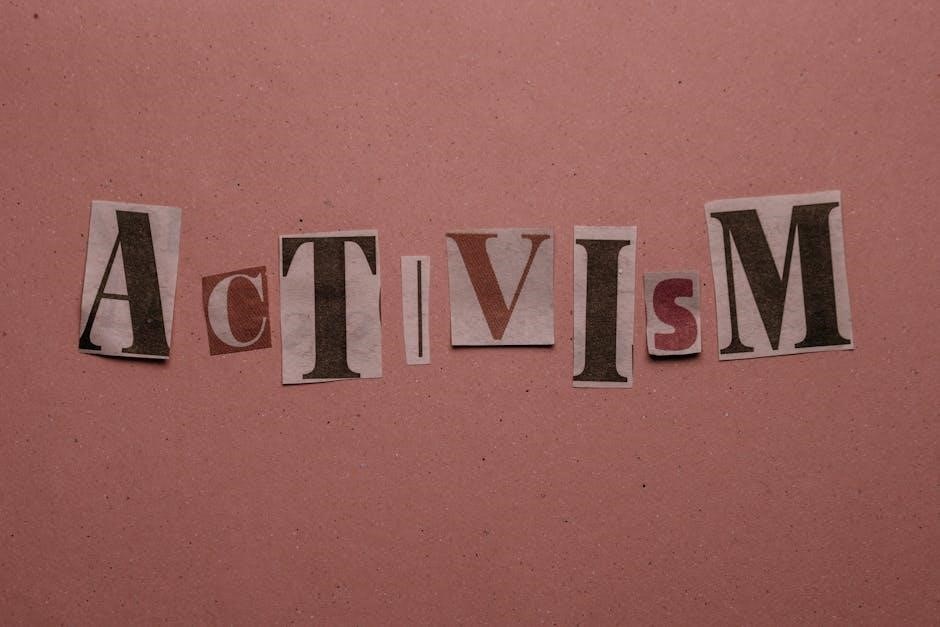
bill of rights scenarios worksheet pdf
Bill of Rights Scenarios Worksheet PDF: An Overview
The Bill of Rights Scenarios Worksheet PDF offers an interactive way to explore constitutional rights. It uses real-life situations to test knowledge of liberties and government powers. Applying amendments to scenarios enhances civics skills and critical thinking.
Bill of Rights Worksheets are educational resources designed to help students understand the crucial parts of the United States Constitution. These worksheets often explore real-life scenarios related to freedoms, like religion, press, assembly, and petition, allowing students to analyze their impact. Worksheets may include primary source quotes from presidents and Supreme Court justices, prompting students to analyze the importance of each right. Activities range from matching scenarios to amendments to creating examples of situations where the Bill of Rights applies.
Understanding the Bill of Rights
The Bill of Rights guarantees fundamental rights and freedoms. Worksheets aid understanding through scenarios. They help connect amendments to real-world situations. This strengthens civic knowledge and awareness of personal liberties.
Key Amendments and Their Meanings
The First Amendment protects freedoms of religion, speech, press, assembly, and petition. The Fourth Amendment safeguards against unreasonable searches and seizures. The Fifth Amendment ensures due process and prevents self-incrimination. Worksheets often explore these through scenarios. These scenarios help students understand how these key amendments apply to everyday situations. Students analyze real-life examples related to these freedoms and analyze their meanings.
Using Scenarios to Teach the Bill of Rights
Scenarios make learning the Bill of Rights engaging and relatable. They help students connect abstract concepts to real-world situations, fostering deeper understanding and critical thinking skills.
Benefits of Scenario-Based Learning
Scenario-based learning makes the Bill of Rights accessible and engaging for students. By exploring real-life situations, learners understand the practical applications of constitutional principles. This method fosters critical thinking, allowing students to analyze complex issues and make informed decisions. Furthermore, scenario-based learning promotes active participation, enhancing comprehension and retention of key concepts. Students develop a deeper understanding of their rights and responsibilities as citizens through interactive problem-solving.
Types of Bill of Rights Scenario Worksheets
Bill of Rights scenario worksheets come in varied formats to suit different learning styles. These include scenario analysis, amendment matching, and creative writing prompts, each designed to enhance understanding and critical thinking skills.
Scenario Analysis Worksheets
Scenario analysis worksheets present students with hypothetical situations that potentially involve violations of the Bill of Rights. Students analyze these scenarios to determine if a violation has occurred. They must identify the relevant amendment and explain how it applies to the situation. These worksheets encourage critical thinking, legal reasoning, and a deeper understanding of constitutional protections in real-world contexts. They promote engagement and analytical skills.
Matching Scenarios to Amendments
These worksheets offer a different approach, presenting students with a list of scenarios and a corresponding list of Bill of Rights amendments. The task is to match each scenario to the correct amendment it relates to. This exercise reinforces the connection between specific rights and their practical application. It strengthens comprehension of each amendment’s core principles by associating them with relevant, relatable situations. This is a practical and engaging way to learn.

Activities and Games Using Bill of Rights Scenarios
Bill of Rights scenarios can be transformed into engaging activities and games. These interactive methods enhance understanding and retention. Games like Bingo or acting scenarios make learning about constitutional rights fun and memorable for students of all ages.
Bill of Rights Bingo
Bill of Rights Bingo is an interactive game that reinforces understanding of constitutional amendments through scenario recognition. Students match scenarios to the corresponding amendment on their bingo cards. This activity enhances comprehension and makes learning engaging. It encourages active participation and quick recall of key principles within the Bill of Rights. Bingo fosters a fun, competitive environment, promoting retention and understanding of civil liberties.
Scenario Acting and Guessing Games
Scenario acting and guessing games offer a dynamic approach to learning the Bill of Rights. Students act out scenarios depicting various rights violations or protections. Peers then guess which amendment is being portrayed. This activity enhances understanding through kinesthetic learning and teamwork. It promotes creative thinking and improves comprehension of constitutional principles. Active participation fosters a deeper connection to the material.
Real-Life Applications and Case Studies
Examining real-life applications and case studies brings the Bill of Rights to life. By analyzing landmark Supreme Court cases and current events, students connect amendments to practical situations. This approach fosters deeper understanding and relevance.
Analyzing Landmark Supreme Court Cases
Analyzing landmark Supreme Court cases provides a tangible understanding of the Bill of Rights. Examining cases like Atkins v. Virginia reveals how the Eighth Amendment applies to sentencing. By studying the arguments and decisions, students explore the complexities of constitutional law. These analyses clarify how rights are interpreted and protected in real-world contexts. Understanding these cases enhances critical thinking and appreciation for legal precedents.
Connecting Amendments to Current Events
Linking the Bill of Rights to current events makes constitutional principles relevant to students’ lives. Analyzing news stories through the lens of amendments fosters a deeper understanding of civic issues. For example, debates over free speech on social media connect directly to the First Amendment. Examining search and seizure issues in modern policing relates to the Fourth Amendment. This approach encourages critical thinking and engagement with contemporary societal challenges.

Creating Your Own Bill of Rights Scenarios
Crafting original Bill of Rights scenarios enhances understanding and engagement. This activity promotes critical thinking and creativity while reinforcing constitutional principles. Relevant, thought-provoking scenarios can bring the Bill of Rights to life for students.
Tips for Writing Engaging and Relevant Scenarios
To create engaging Bill of Rights scenarios, start with current events or familiar situations. Ensure clarity by using straightforward language and avoiding legal jargon. Each scenario should clearly illustrate a specific amendment. Present diverse perspectives to encourage critical analysis. Consider incorporating ethical dilemmas to spark debate and deeper understanding. Make them relatable to students’ lives for better comprehension.
Resources for Bill of Rights Education
Explore online databases for Bill of Rights lesson plans and activities. Access primary source documents from archives like the National Archives. Utilize interactive worksheets and scenario analysis tools for engaging education.
Online Databases and Lesson Plans
Numerous online databases offer resources for teaching the Bill of Rights. These include lesson plans aligned with educational standards and interactive activities suitable for various learning environments. Teachers can find worksheets, scenario-based exercises, and primary source materials to enhance student understanding. Many websites also provide access to legal databases and case studies, facilitating a deeper exploration of constitutional principles. These resources support engaging and effective Bill of Rights education.
Primary Source Documents
Engaging with primary source documents is vital for Bill of Rights education. Original texts, like the Constitution and Bill of Rights, provide firsthand accounts of foundational principles. Examining historical speeches, letters, and court decisions offers context and deeper understanding. Online archives and libraries provide access to these resources, allowing students to analyze the framers’ intent. Analyzing primary sources fosters critical thinking and historical interpretation skills, enriching comprehension of American rights and freedoms.

Integrating the Bill of Rights into the Curriculum
Integrating the Bill of Rights into the curriculum fosters civic understanding. It promotes engagement with constitutional principles. Lesson plans should incorporate real-world scenarios. This helps students connect rights to everyday life, enhancing comprehension.
Lesson Plan Ideas
Develop lesson plans using Bill of Rights scenario worksheets to spark student engagement. Incorporate activities where students analyze hypothetical situations. Assign roles for debates on constitutional rights violations. Have students act as defendants, prosecutors, or judges. Use scenarios about searches, interrogations, jury trials, and free speech. Encourage them to identify the relevant amendments. This promotes critical thinking and deeper understanding of protected freedoms.
Cross-Curricular Connections
Integrate Bill of Rights scenarios across various subjects to enhance learning. In history, analyze landmark Supreme Court cases related to the amendments. Connect scenarios to current events in civics, fostering civic engagement. Use scenarios as prompts for creative writing assignments in English. Explore the historical context of each amendment. Discuss their impact on literature, art, and music. This promotes interdisciplinary understanding.

Assessing Student Understanding
Evaluate student comprehension using worksheet answer keys and rubrics. Encourage class discussions and debates to gauge understanding. Assess scenario analysis skills and critical thinking. Observe participation and engagement in activities. This provides a comprehensive assessment of learning.
Worksheet Answer Keys and Rubrics
Answer keys are crucial for efficiently evaluating student responses, ensuring accurate grading and feedback. Rubrics offer detailed criteria for assessing critical thinking and application of Bill of Rights principles within scenario analyses. These tools promote consistent and objective evaluation. They streamline the assessment process, allowing teachers to quickly identify areas where students excel or need further support. Effective rubrics clarify expectations, enhance understanding, and provide targeted feedback, thus improving overall learning outcomes related to constitutional rights.
Class Discussions and Debates
Class discussions and debates provide dynamic platforms for exploring the Bill of Rights. They encourage students to articulate their understanding and engage with diverse perspectives. Scenarios spark thoughtful dialogue, prompting analysis of complex legal issues. Debates foster critical thinking, argumentation, and respectful disagreement. Students learn to support their claims with evidence and consider opposing viewpoints. These interactions promote a deeper comprehension of constitutional principles and their real-world implications, enhancing civic engagement and analytical skills through active participation and collaborative learning experiences.
Addressing Controversial Issues
Addressing controversial issues involves facilitating discussions on conflicting rights. It promotes critical thinking and civic engagement among students. This approach encourages respectful dialogue and deeper understanding of complex legal and ethical dilemmas involving the Bill of Rights.
Facilitating Discussions on Conflicting Rights
To effectively facilitate discussions on conflicting rights, begin by presenting clear, unbiased scenarios involving potential Bill of Rights clashes. Encourage students to identify the rights in question and articulate the competing interests. Promote respectful debate by establishing ground rules for active listening and civil discourse. Guide students to consider different perspectives and potential compromises. Use open-ended questions to foster critical thinking and deeper analysis of the complexities inherent in balancing individual freedoms with societal needs, ensuring every student feels heard.
Promoting Critical Thinking and Civic Engagement
Promoting critical thinking and civic engagement involves using Bill of Rights scenarios to encourage analysis of constitutional principles in real-world situations. Students should evaluate diverse viewpoints, assess evidence, and formulate reasoned arguments. This approach fosters a deeper understanding of civic responsibilities and encourages active participation in democratic processes. Engaging with complex scenarios helps students develop informed opinions and the ability to contribute meaningfully to public discourse, ultimately strengthening their role as responsible and engaged citizens within their communities and beyond.

